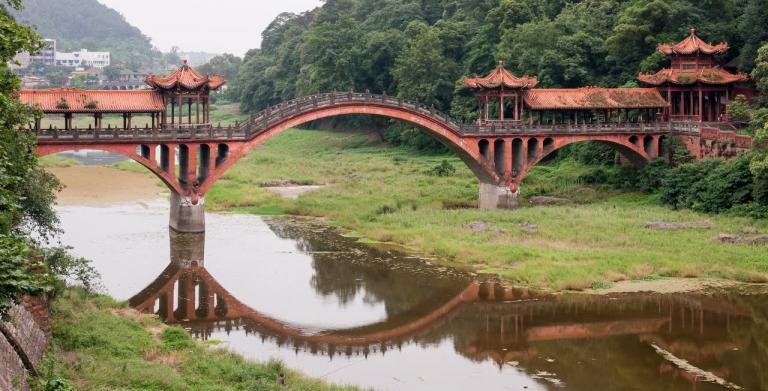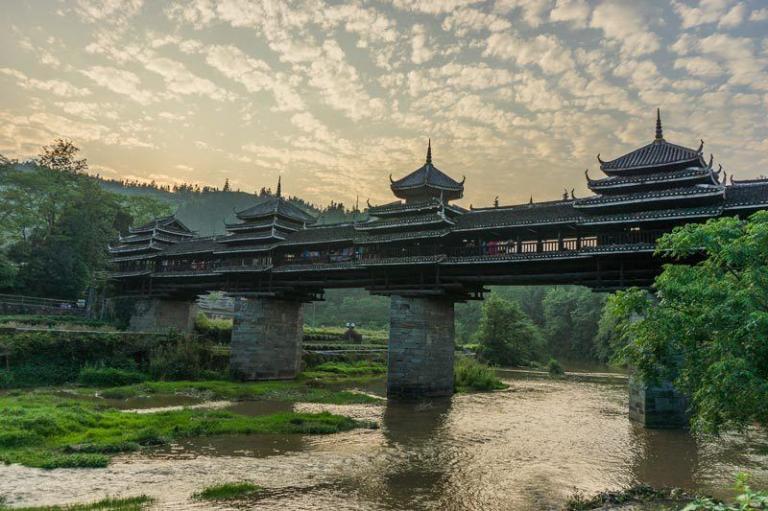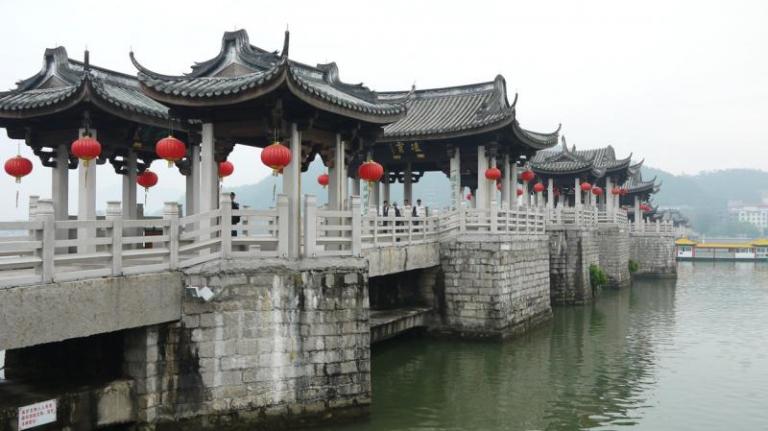Chinese Bridges
3 min readChinese Bridges
Chinese bridges have as a long history as the civilization because the rivers are the cradles of the civilization and rivers can’t do without bridges. Throughout history, the Chinese nation has erected thousands of bridges, which form an important part of her culture. Ancient Chinese bridges are universally acknowledged and have enjoyed high prestige in the bridge history in the world.
Though bridges are usually built for practical use, yet it can still has an artistic sense in the hands of skilful workers.
The bridges may add to the scenic spots, setting off their vigorous and elegant atmosphere.
Chinese bridges are classified into four categories in terms of framework: the beam, arch, cable suspension and floating bridges. According to building materials, bridges may be divided into two types: stone bridges and timber bridges.

The Beam Bridge
The earliest beam bridge in Chinese history is the Ju Bridge dating from the Shang Dynasty. During the Song Dynasty,a large number of stone-pier and stone-beam bridges were constructed. Only in Quanzhou within 200 years were 110 bridges built, among which 10 are famous. For example, Anping Bridge in Quanzhou.
Nanjing Changjiang Bridge
In the ancient time in order to elongate the span, the only way was to place horizontally both the timber beams and the stone ones on top of one another, the upper layer cantilevering over the lower one, thus supporting the simple beam in the middle. The earliest record of the timber cantilever beam dates as far back as the 4th century BC. The extant single-span timber cantilever bridge, the Yinping Bridge at Wenxian, Gansu Province, which was rebuilt in the Qing Dynasty, has a span of more than 60m with covered housings on it.
The Arch Bridge
The oldest and well-preserved arch bridge in China is Zhaozhou Bridge or the Anji Bridge at Zhouxian in Hebei Province, built in the Sui Dynasty. It was designed by Li Chun and Li Tong. The bridge span is 37.02 meters long; and the rise is 7.23 meters above the chord line; narrower in the upper part and wider in the lower, the bridge averages 9 meters in width. It is composed of 28 individual arches bonded transversely. The main arch ring is 1.03m thick with protective arch stones on it. Each of its spandrels is perforated by two small arches,3.8m and 2.85m respectively in clear span, so that flood water can be drained and the bridge weight is lightened as well.
Zhaozhou Bridge in Herbei Province
The bridge, exquisite in workmanship, unique in structure, well-proportioned and graceful in shape, and meticulous yet lively in engraving, has been regarded as one of the greatest achievements in China. Great attention and protection have been given to it through successive dynasties. In 1991, the Anji Bridge was named among the world cultural relics.

The Cable Suspension Bridge
.The oldest and broadest bridge with the most iron chains in China is the Jihong Bridge at Yongping County in Yunnan Province. The bridge is situated on the ancient road leading to India and Burma. It is 113.4 meters long,4.1 meters wide and 57.3 meters in clear span. It spans the Lanchang River.
Cable suspension bridges vary in the materials of which the cables are made: rattan, bamboo, leather and iron chain.
And iron chain bridges can stand much longer than the other materials.
The Floating Bridges
The floating bridge tends to be temprory structure. It is often taken apart after it is used. The oldest and the greatest floating bridge in China was the Yangtze River Floating Bridge erected in the early period of the Song Dynasty. It was Zhao Kuangyin who ordered thousands of ships to be chained together.
In ancient China, the beam bridges appeared before the cable bridges, and the cable bridges prior to the arch ones.
They got through the stages from simple to complex.









